Amitha's Blog
Strange Architecture: Don’t Fight it – Embrace it!
When my hubby and I purchased our first home, it was so sweet and charming – much like us, it was love at first sight! If you’ve ever gone house hunting you know there are always parts you love and parts you are, well, less excited about, in a home. This house had a very strange architectural feature. There was a staircase that was L-shaped; you walked up a few steps, maybe four, there was a 3′ x 3′ landing and then the stairs/steps turned right and continued on up. Sounds fine, right? Well on the landing, to the left, there was a ladder that you could climb, which went all the way up to the attic! The previous owners had fully converted it so it could have served as a beautiful home office or even kids play room. But it was so strange to access it in this way, and the ladder had round rungs so it was very difficult to climb! Well, I decided not to fight it but to embrace it, and either use the room as it was or see how we could better access it. If you know me, I love a little construction project – so we took over what was an art wall behind the stairs and some attic space to create a little 30″ wide hallway to access the attic. We ended up with a great solution to our little architectural problem, but there are really all kinds of strange things going on in some homes. My suggestion when dealing with these little quirks is
- don’t get frustrated AND
- consider how your design can hide the flaws
Here are four problems areas that come up over and over again:
1. Dormer windows These are often a big frustration for many people and I too find them hard to work with. A few simple suggestions:
- keep your paint color close to the ceiling color so there’s not a ton of contrast forcing your eye to jump all around the room
- consider an all-over wallpaper pattern, like a subtle floral print. This will soften the edges and allow you to view the entire room rather than all those jutting angles
- again, embrace the angles and consider those spaces a place to potentially tuck in a bed or a built-in bench or desk
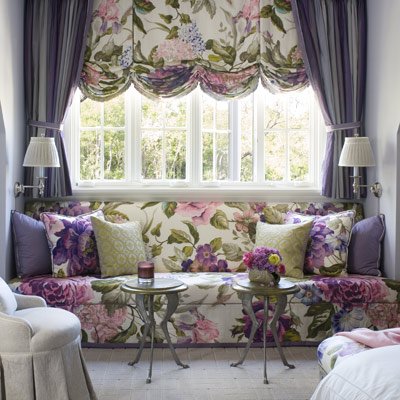
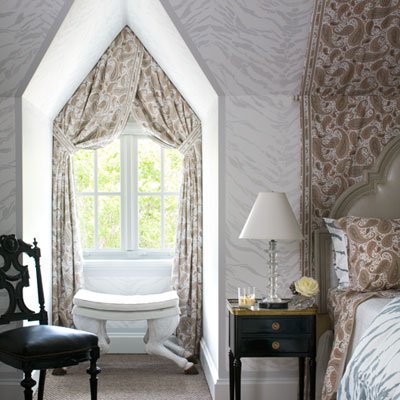
2. Angled Ceilings
These can be difficult to work with as they often reduce the height of the room. I always try to place the bed on an angled wall since you’re usually lying down in this part of the room. Here is a great example of how to work with this problem area:
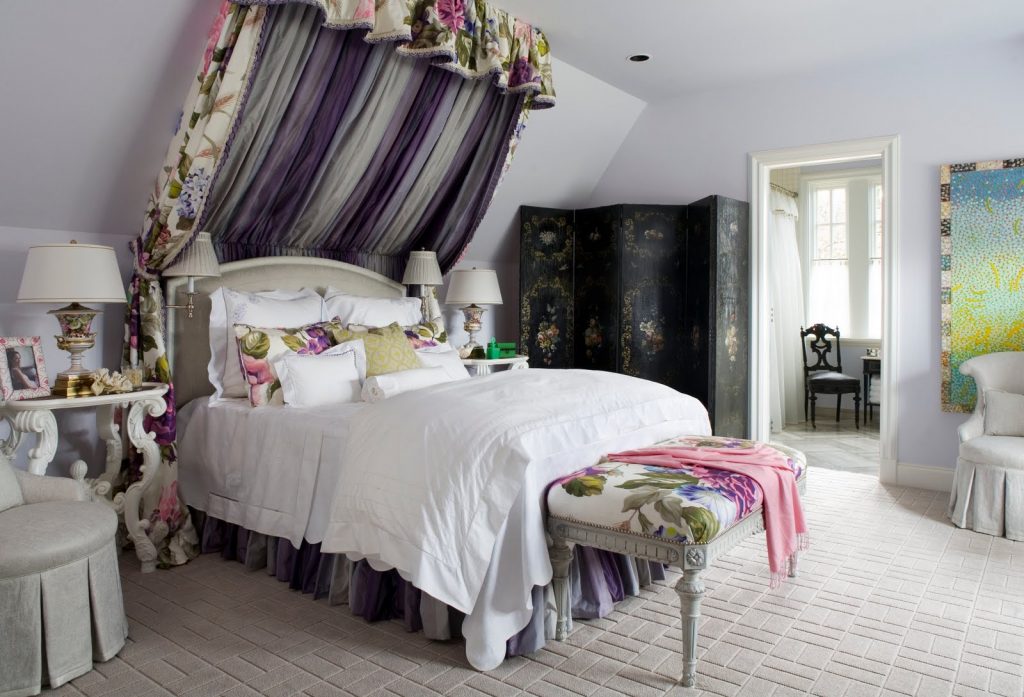
I love that the color has been kept very consistent from the walls to the ceiling so there’s not a lot of contrast. And I especially love how this designer used the angled ceiling to create a little canopy over the bed!
3. Too Many Windows
Clients often come to me worried about how to put furniture into a room with wall-to-wall windows. Usually they feel their pieces will look odd against a window and end up cramming everything into the center of the room – very awkward!
The truth is, you can very easily place your furniture in front of a window, as long as you really consider the view and the window and make it look like it was done intentionally. Take this breakfast room, for example. The floor-to-ceiling windows were really presenting a challenge in terms of decoration, and the round table took up too much space and just didn’t work.
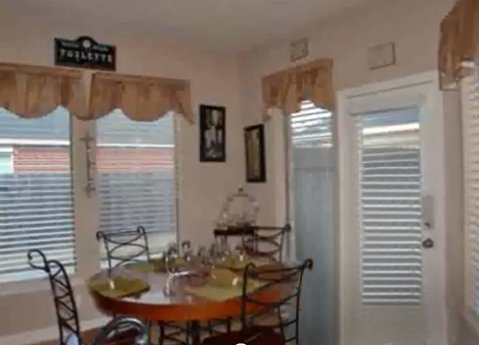
In this space, we designed a beautiful eat-in banquette around an antique-style solid wood trestle table. A pretty window treatment framed the top of the window nicely and drew the eye up, and the blinds let in lots of light, making the room look bright and inviting.
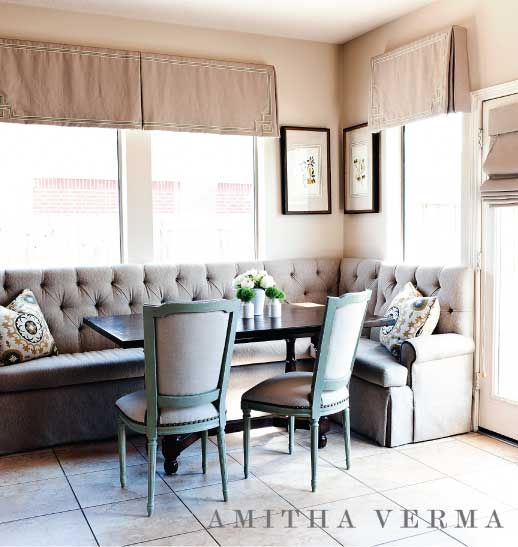
4. Not enough wall space
I often hear from customers that they love so much of the artwork at our shop, but they don’t have any wall space with the new open plan designs. This can be difficult for both placing furniture and for hanging artwork.
For placing furniture I recommend using this exercise: imagine where a wall might have been and use that location to free float your main sofa, and then build around that.
For instance, in the past a wall might have been in-between the great room and kitchen. Use that imaginary partition to work out where to place your sofa. For artwork, I suggest layering art on the fewer walls that you do have to work with. For instance, I might pair a lovely vintage oil painting with a set of creamware or transfer ware plates to create a really ‘wow’ art wall.
So, keep in mind – keep an open mind! Just look at the space creatively and think how you can work with all the funky lines and walls or lack thereof. I hope you loved our advice! If so please share or like this article. And be sure to leave a comment below sharing any successes (or failures) you’ve had with strange architecture!
Cheers,



Secret Tool Revealed
High-priced interior decorators desperately want this hidden: YOU can transform your home into a gorgeous dwelling—all by yourself—and save thousands. All you need is a few dollars’ worth of material. Access this amazing secret RIGHT NOW, and revitalize your home...in just a few hours.





